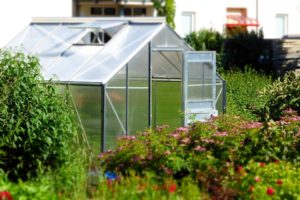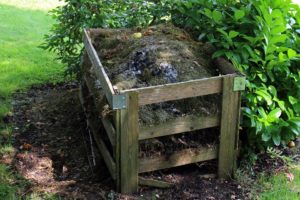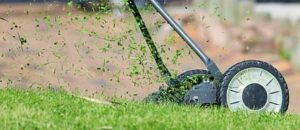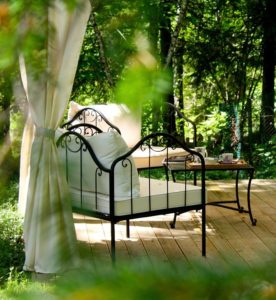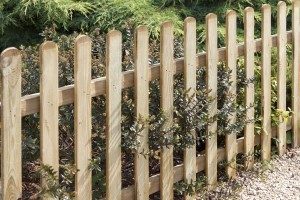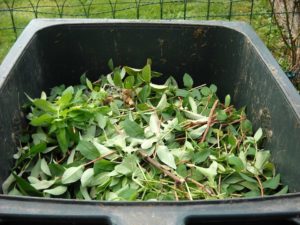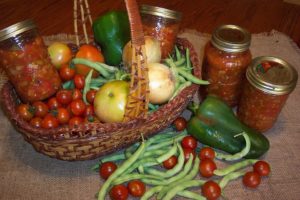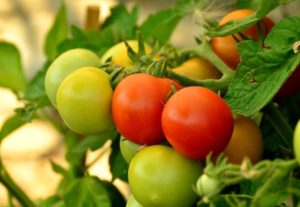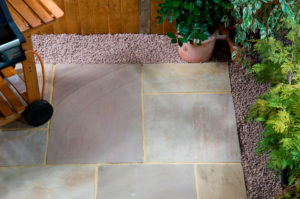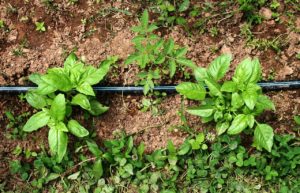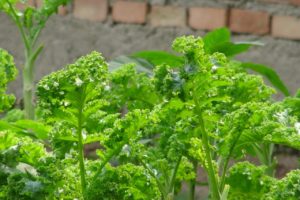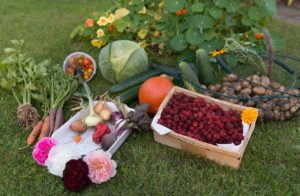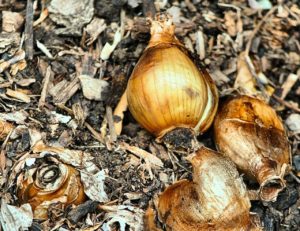7 Garden Tidy-up Jobs for Autumn
October is the perfect month to start garden related cleaning, clearing and maintenance jobs that you haven’t had time to do over the summer. As ‘out of sight means out of mind,’ some parts of the garden – including sheds and greenhouses – are often neglected when it comes to keeping your outdoors in order. So, here is a checklist of garden tidy-up jobs that are ideal for cooler weather, by Madingley Mulch, bark mulch suppliers to customers in Hertfordshire, Cambridgeshire, Essex, Suffolk and Bedfordshire.
The Greenhouse – Autumn is the time to turn your attention to your greenhouse so you can nurture any plants inside. If you have a spare weekend, try to empty out your greenhouse and get rid of anything that you don’t need, such as broken pots or dead plants. Next, give your greenhouse a good scrub inside and out. This will maximise the light filtering in through the windows to benefit plants that you are growing through the winter, such as herbs or alpines.
The Shed – It is easy for the contents of your shed to become chaotic over the spring and summer months, as frequently used tools don’t always get put back in the right place. If your shed is in a complete jumble, you might want to clear it out completely so you can give the interior a thorough tidy. One tip is to take a trip to your local DIY store and invest in hanging hooks for larger tools, such as rakes and spades, and place storage boxes on shelving to keep smaller tools in one place. This will leave the floor clear for your wheelbarrow, lawnmower, children’s toys and garden furniture.
The Tools – Organising your shed gives you an opportunity to check your garden tools and get them sharpened or repaired ready for next year. You can either do this yourself, or there are some companies that will do this for you. If you need to replace any garden tools, we sell high quality Spear & Jackson Tools at Madingley Mulch – just click here to view. October is also the ideal month to get your lawnmower serviced as it will save you time in spring.
The Pond – Another key job in autumn is to turn your attention to the pond. This is because fish are less active in the colder months as their metabolism starts to slow down. You can stop leaves falling into the pond by covering the water with netting (as decaying leaves will affect the water quality). Another way to keep your pond looking its best is to remove any dying plants from the water before they start to decompose.
The Lawn – If you have any deciduous trees in and around your garden, you’ll frequently need to rake leaves off your lawn. If your garden is in its infancy, however, the autumn months provide the best temperatures to lay turf (i.e. not too hot or cold). At Madingley Mulch we sell quality turf… and you can have a lawn that is ready to walk on in as little as two weeks!
The Patio – A patio that is full of moss, weeds and muck can spoil the look of your garden, and although it might not be top of your to do list, it is worth addressing. Set aside some time, if you can, to give your patio a good scrub with a broom and soapy water to shift any surface dirt. Pull up any weeds by hand, or remove them with weedkiller, such as Roundup Weed Killer that you can buy through Madingley Mulch. If you have plans to build a new patio, we sell a full range of paving slabs to suit any style of garden.
The Fence – As autumn is a more relaxed time for gardeners, this is the season to turn your attention to your fencing and to replace any broken panels. We sell a fantastic range of high quality fencing, including picket panels, professional lap panels, ultimate lap panels and trellis. We also sell everything you need to build a new boundary including concrete mix and fence posts. Just click on the link above to buy.
The Soil – Mulch doesn’t just neaten the look of your garden, but it also protects your plants. Laying mulch in autumn will help protect the roots of plants during winter and should be laid at least 2 inches thick on damp or moist soil. As bark mulch suppliers, we deliver bulk bags to customers in Hertfordshire, Suffolk, Essex, Cambridgeshire and Bedfordshire.
Nine Reasons to Use Garden Compost
As a keen gardener, the chances are you will either buy or make your own compost to improve the soil in your garden. But do know just how many benefits there are of composting? Here, Madingley Mulch, who sell quality outdoor supplies to customers in the Cambridgeshire, Suffolk, Essex and Bedfordshire areas, outlines nine good reasons to use garden compost.
Limits Weed Growth – When used as a mulch, compost helps to control weeds. To keep weeds in check, spread a thick layer on top of the soil (up to 4 inches thick is ideal). Keep topping it up in spring and autumn as the compost will slowly sink into the soil.
Improves Soil Composition – Some parts of Cambridgeshire have heavy, clay soil. Compost helps to loosen the soil in these areas and improve aeration and drainage. Our Spent Mushroom Compost is the perfect choice for this type of soil and is a mix of animal manure and decayed straw.
Helps the Environment – As a gardener, you know that every little helps when it comes to making a positive difference to the environment. Recycling and composting are becoming more and more popular to reduce solid waste being dumped on the landfill. So by composting you are taking steps towards a better future!
Reduces Temperature Extremes – Compost can be used as an alternative mulch, and just like mulch it helps stabilise the temperature of your soil. Using compost helps to keep the soil warmer in winter, and cooler during the hottest days of the year. It also serves to protect plant roots from wind damage.
Saves Water – Compost helps to increase the organic matter in your soil, and this in turn assists the soil in retaining water, which is particularly beneficial in the summer months. It works just like mulch in this way, and reaps big rewards as ultimately you won’t have to water your plants as much!
Enriches the Soil – A ready mixed compost has a host of nutrients, including potassium, nitrogen and phosphorous, so it eliminates the need for chemicals such as synthetic fertilisers. In the long run your plants will thank you for it as you can expect healthier flowers, fruit and vegetables.
Wards off Disease – Compost helps to keep plant diseases at bay because of the amount of nutrients it adds to the soil. A study featured in organic pioneers’ Rodale Institute’s online News & Research pages showed that compost not only helps to keep plants healthy by limiting disease but, according to a team of researchers from Idaho, it can even help to eliminate certain strains of E.Coli.
Provides a Habitat for Worms – Compost provides a habitat where earthworms and other organisms can thrive. Worms, nicknamed ‘nature’s ploughs’ by Charles Darwin, aerate the soil and break down organic matter to release the nutrients.
It Works for Potted Plants Too! – Using compost in your plant pots and hanging baskets helps to enrich the soil and improve plant growth. It can be mixed with potting soil to benefit all potted plants, including houseplants.
Garden Compost – The Quick Solution
Do you want to improve the condition of your soil, but don’t feel that you can dedicate the time to making your own compost? Buying readymade compost offers the perfect solution, particularly if you have a small garden with limited space, or substantial grounds. At Madingley Mulch, we can deliver bulk buys of garden compost direct to your door in parts of Bedfordshire, Cambridgeshire, Suffolk and Essex.
Six Lawn Maintenance Tips for Autumn
As the lawn takes up the majority of the outdoor space in most gardens, looking after it is often a top priority. Whether your grassed area is traditional, geometrically shaped, or is just a small patch of land, the way you maintain it makes a significant difference to the overall look of your garden.
Of course, creating a lush, green lawn takes time, and there’s far more to it than running a mower up and down it every now and again to replicate the perfect stripes of sports stadiums and golf courses. Madingley Mulch, suppliers of garden products including top dressing soil in Cambridge, looks at some of the ways you can keep your garden looking immaculate this autumn.
Mowing
The growth of the grass will start to slow down, but you still need to keep mowing weekly in September. It’s also a good idea to raise the height of your lawn mower blades, and if your lawn is moss prone, you should raise the height of your blades even more. If you want to create the neat, stripped look to your try alternating the way you mow your lawn. Mow left to right one week, and up and down the next (or north to south, then east or west). This keeps your lawn looking flat and prevents the bumpy ‘washboard’ effect which can spoil the look of your grass.
Edges
Another way to create a pristine garden is to cut the edges of your lawn as regularly as you mow it. This also means cutting parts of the lawn where the mower can’t get to, such as around trees and hedges. There are electric or manual tools available, and the one you choose will depend on the size of your garden, and your budget. For a tidy finish, you can collect up all your grass cuttings and throw them on your compost heap.
Aerating
September is also a good time to aerate your lawn, and you should do this once a year to keep it healthy, especially if your lawn is prone to heavy footfall. To do this, start by using a rake get rid of the thatch – as this will help the grass grow stronger. Next aerate your lawn, which involves punching small holes in the soil to prevent compaction and ensure that water and nutrients can get to the grass roots. You can do this by using a garden fork or, for larger gardens, a specialist lawn scarifier. It is also a good idea to apply top dressing after any lawn maintenance work.
New Lawns
Spring or autumn are the best seasons to lay new turf as there are plenty of rainy days to keep it watered; to make life easier, you can buy high quality lawn turf in 1 square metre rolls from us for home delivery. This is also the ideal time of the year to grow a lawn from seed and we sell economy bags of grass seed, tools, as well as top dressing soil from our Cambridge shop to help you create the best environment for your grass to grow.
Watering
How much you water your lawn, depends on how much rain that you have had this month. It’s a good idea to keep the lawn watered in advance of any lawn maintenance, such as aerating or sowing grass seed. Whereas in summer, it is best to water in the evenings (so the sun doesn’t cause evaporation), in autumn the reverse is true: it’s a good idea to water in the mornings.
Pests
Keep using nematodes on your lawn this month to combat lawn chafer grubs, which feed on the roots of grass, creating yellow patches. They also attract crows who feed on them and damage your lawn in the process. For best results water the lawn before and after using nematodes.
Madingley Mulch sell a wide range of lawn maintenance products, including soils, conditioners and fertilisers, garden tools, lawn turf, grass seed and Evergreen 4 in 1. Just click on the link above to buy.
This Year’s Top Garden Trends
This year has seen some exciting trends emerge in garden design. Most of these are easy to incorporate in your own garden – from brightly coloured flower beds, to curved pathways made from natural paving, and vegetable plots for even the smallest of gardens. Here Madingley Mulch, near the Bedfordshire and Suffolk borders, looks at four of this year’s popular garden ideas.
The Curved Garden
Gone are the days of poker straight garden paths and flower beds. Now curved lawns, twisting pathways, rounded water features and archways are the fashionable way to add interest to your garden. One example of an outdoor space that includes all these ideas is the Butchart Botanical Garden, 4,500 miles away in British Columbia, Canada, which draws one million visitors a year. Of course, your garden might not be on this scale, but you can draw inspiration from the picture above for your own grounds. In the above photo, the curved natural paving and shaped lawns gently draw the eye from one area to the next. There are surprises on every bend, making the outdoor space look even bigger than it really is – something which you can do with your own garden.
One of the ways to take this curved look a step further, while also neatening the edges of your rounded lawns and flower beds, is to use log edging, which you can buy direct from our store in Cambridge.
The Oriental Vegetable Garden
People have long been turning patches of their own land into vegetable or herb gardens. But in recent years – and thanks to chefs such as Jamie Oliver and Hugh Fearnley-Whittingstall – growing your own has had a major revival. Even in the smallest of gardens, green-fingered cooks have set aside, at the very least, a planter, pot or window box to grow vegetables from seed. This year, however, we have seen a surge in interest in growing oriental vegetables such as Chinese cabbage or edamame. There are all sorts of kits you can buy to help you get started.
The Colourful Garden
Vibrant, bold gardens have also risen in popularity in East Anglia, with a number of UK gardeners transforming traditional wooden fences and seating with a pop of paint. This year blue and green have led the way as the colours for borders, window boxes, arbours and/or planters, with brightly coloured flowers also getting a look-in. While tulips and dahlias are a great choice for vivid flower beds, you can also add colour to paths and driveways with our decorative slate chippings such as our red granite 20mm chipping.
The Relaxation Garden
Gardens are increasingly being seen as an extension of the home, and are great way to bring the indoors outside in sunny weather. Love seats, benches in hideaway corners, and garden furniture with soft cushions to sit on are becoming all the rage. People are also taking a leaf from our Mediterranean neighbours and creating designated outdoor dining spots in a shaded area, with a built-in barbecue nearby. It is easy to turn any paved or decked areas into an outdoor entertainment zone.
Madingley Mulch supplies all the garden and landscaping products you need from natural paving to bulk bark, garden tools, compost, mulch, decorative stones, soils, conditioners, fencing and turf. Click on the link above to view our complete range of products and to order from us today. Alternatively, why not visit our shop on Madingley Road, Coton, Cambridge, which is also within easy reach of Bedfordshire and Suffolk?
Reasons to Choose Wooden Fencing for Your Cambridge Garden
If your garden needs a facelift, one of the best ways to improve its appearance is to replace any old, broken or battered fencing. At Madingley Mulch, we supply a range of styles of wooden fencing panels and posts from our Cambridge base. Here we look at some of the main advantages of installing a new fence or replacing old panels or posts.
Enhancing Appearance
Wooden fences are a versatile and natural choice to surround a garden in the town or country. Wood is very attractive in itself and will contribute to the appearance of the garden, toning in with the other natural elements which surround it. Using decorative fence panels can create a different look. Another option is to use trellising within or alongside the fence, making it easy to grow a variety of climbing plants.
Trellises can also be mounted on a garden wall, or as another alternative you could use pieces of fencing to section off different areas of your garden. A picket fencing panel is ideal for this as it is light and open in appearance, or you could put up a trellis. This works well if you have a kitchen garden where you grow vegetables and want to keep it separate from nearby flowers, or if you want to add shade to an area for eating outside.
Improving Privacy
Privacy in the garden is a major consideration for many people, since we like to regard our outside space as extensions of our homes and relax in peace without worrying about the neighbours. Putting up a fence can improve your enjoyment of your garden and also benefit your neighbours, since they will have the same advantages of privacy too. Having said this, it is always advisable to talk to your neighbours before putting up a new fence and check they are happy. The usual planning rules are that fences can be up to two metres tall at the back of a property and up to one metre at the front without the need for planning permission.
Improving Security
Gardens without proper fencing can offer burglars a way in, with crime statistics showing that most break-ins take place from the back or side of a home. Having a good fence and gate will help to keep them out, and police advice is to ensure fencing is in good repair. Fixing trellis panels securely to the top of a fence can act as an extra deterrent, since trellis won’t carry the weight of anyone climbing up. If you grow a thorny plant on the trellis, this will be still more off-putting.
Marking Boundaries
One of the main advantages of a fence is that it shows which area is yours and keeps your garden separate from that of the neighbours. It also keeps children and dogs safely within your garden, and helps to deter other pets which might be tempted to wander in from outside!
Madingley Mulch stocks a range of wooden fencing supplies including picket, lap and trellis panels, fence posts and tools for putting up fences. We supply customers in Cambridge and the surrounding area, including Suffolk and Essex.
Wooden Fencing Cambridge – See our range of garden fences and tools.
Seven Top Tips for Caring for Garden Turf
Laying turf creates a lawn very quickly, rather than having to wait for grass seed to grow. However, new turf needs proper care to ensure it takes root and flourishes. As turf suppliers based in Cambridge, Madingley Mulch also provides a whole range of products to care for your grass, including top dressing for lawns.
Here are seven top tips for looking after turf.
- Prepare the Soil – For good results, it’s essential to have a good soil base ready before the turf is laid. The sand and soil mix provided by Madingley Mulch is ideal for creating the right conditions, because it is light and has a good level of drainage. Digging or rotovating the ground can help to improve its condition, as can digging in well-rotted manure or other organic matter. Preparation work also includes getting rid of weeds such as couch grass or bindweed, but you need to avoid residual weedkiller, as this could potentially stop the grass from being established.
- Lay within 24 Hours – We offer turf for both collection and delivery, which is all grown in the local area within East Anglia and of good quality. Some times of year are better for laying turf than others, particularly spring and autumn. Ideally, new turf should be laid within 24 hours of delivering or collecting it, as this leads to the best results. This means it’s important to have the ground prepared in time for its arrival. Before the turf is laid, it should be stacked up and stored in a shady area, as this will help to avoid it drying out too much.
- Avoid Walking on the New Turf – Walking on new grass before it has had time to establish itself can damage it, with footmarks sinking into the turf and causing dead patches. However, it’s possible to guard against this by using boards or planks when you need to access the lawn and making sure you only stand on the boards. It can be difficult to keep pets and children off the new turf, but they will also need to steer clear for at least the first week!
- Watering – To take root properly, new turf needs to be kept moist. This is one reason why spring and autumn are more popular seasons for laying it than summer, with the higher risk of drought. When watering new-laid turf, you will need to use a hosepipe to be sure of getting enough moisture into the ground. Once the turf has been laid, it should be watered every day, but, if the weather is very hot, watering might need to be carried out twice daily.
- Mowing – The first cut will usually be needed after about a week, but first check that the roots have gone into the soil properly. To guard against cutting away too much of the new growth, you need to adjust the mower’s blades to a higher setting for the first cut. It’s also advisable to mow in a different direction each time during the first few cuts.
- Top Dressing – Top dressing for lawns can also help with the condition of the turf, especially if there are dry patches showing. If you want advice about lawn top dressing mix or other products which could improve the condition of the grass, please contact us by phone at our site in Madingley, Cambridge, for a reliable and friendly service.
- Ongoing Care – Even after the turf has taken root and turned into an established lawn, it will still need ongoing care. Regular fertilising can help to create a beautiful green lawn, with many gardeners feeding the lawn for the first time within 4 weeks of laying the turf, and then applying fertiliser every 2 or 3 months after that. As well as fertilising, watering and mowing regularly, you also need to watch out for any lawn pests or diseases. If you notice anything you are worried about, then it’s best to get advice early so you can tackle any problem before it becomes established.
Top Dressing for Lawns Cambridge – Click to see Madingley Mulch’s range of garden products and tools, or click here to learn more about our turfing supplies. We supply customers from areas including Cambridgeshire, Bedfordshire, and Hertfordshire.
Nine Gardening Tips for September
If you are a keen gardener, you’ll never have a dull moment, as you’ll always find something to do whatever the time of year. From composting to collecting plant seeds and harvesting, September is a busy month, as this is when you round off the summer season and prepare for cooler weather to set in. Wondering what the top priorities are for autumn? Here are nine gardening tips by Madingley Mulch outdoor gardening supplies, Cambridge.
Composting
Now is the perfect time to invest in a compost bin, in advance of all the fallen leaves that you will collect in your garden this autumn. A top tip is to place it somewhere in the garden that is easy to reach, such as within easy distance of the kitchen. Otherwise, the chances are that you won’t use it. If you don’t want to do your own composting, we have a variety of excellent soil conditioners and compost, such as our popular own brands Denise’s Delight and Tony’s Tonic.
Dead Heading
Keep your garden neat and tidy by continuing to dead-head your plants in pots and hanging baskets as container plants will keep going for a while in autumn, usually until the first signs of frost set in. Dead-heading means removing flowers when they are wilting or dying, to encourage more growth. It is easy to do and can either be done with your finger or thumb, or with secateurs.
Greenhouses
If you find yourself with some time to spare, you might want to turn your attention to your greenhouse. Clearing out dead plants and emptying containers of old compost will help keep pests at bay over winter. Another top tip is to water your greenhouse plants in the morning or early afternoon to discourage botrytis – a type of fungus that thrives in damp and chilly environments.
Harvesting
This month you’ll still be busy harvesting your home grown fruit and vegetables, such as apples, blueberries, blackberries, strawberries, grapes, figs, onions, carrots, peas, salad leaves and runner beans. If you find yourself with an overspill, you can either freeze or preserve the excess or distribute it among friends, family or neighbours, who will be delighted with your gifts.
Herbs
Now is the time to take cuttings from perennial herbs (these are ones that live for more than two years), such as rosemary and sage. You can plant these in a pot of compost, and put them somewhere warm until the roots grow. If you cook with herbs such as parsley and mint regularly, it’s a good idea to keep them indoors over the colder months.
Lawns
Spring or the beginning of autumn is a great time to sow grass seed or lay turf, as the weather is not too hot or cold. At Madingley Mulch, we sell excellent quality lawn turf in 1 sq metre rolls for collection or delivery in the Cambridgeshire area. If you prefer to grow your lawn from seed, we also sell boxes of grass seed and large economy bags.
Pots
Raising your pots on bricks or slates will prevent the soil getting too wet. In spring or summer, however, it is worth lining terracotta pots with a plastic bag with holes in the bottom, as terracotta dries out much quicker than plastic or ceramic pots. This technique will help the soil maintain its moisture.
Pumpkins
Are you keen to grow the best pumpkin in time for Halloween? One of the ways to help your pumpkin ripen before the big event is to get rid of any leaves that are growing over your fruit. Also, before you eventually store your pumpkins, leave them out in the sun for a while to let the skin of the fruit harden.
Seeds
This is a good time of year to collect seeds from annual plants. However, a top tip is to make sure they are completely dried out before storage. Once dry, put your seeds in an envelope and store them in an airtight container away from light and heat (a fridge is perfect). To keep your seeds dry, one method is to wrap powdered milk in tissue and to place this in the container with the seeds.
Madingley Mulch sells a wide range of outdoor gardening supplies in the Cambridge area including mulches, soil, soil conditioners, paving slabs, barks, aggregates, decorative stones, chippings, cobbles, fencing and turf. Just click on the link above to buy.
How to Create the Perfect Patio
With warm weather continuing, now is a great time to take advantage of the sun’s rays and think about re-designing your garden to create a beautiful patio area. Whether you have excellent DIY skills or would rather employ a professional for the job, we have a fantastic range of paving slabs to create any style of patio, from traditional to modern. Our products include premier riven slabs, textured paving, courtyard slabs and Indian paving and can be delivered, along with associated products, to customers in Bedfordshire, Suffolk, Essex or Cambridgeshire. Most of our paving stones come in a variety of colours and sizes, so you can easily find what you need direct from our store at Madingley Mulch.
The History of the Patio
Patios have been around as far back as ancient times, and indeed the word ‘patio’ stems from the Latin word ‘patere’ which means to lie open (to the elements). It was a feature of affluent Roman homes, where there would be an atrium, or central courtyard, with rooms leading off it. Courtyards later became integrated into Spanish architecture, and there is even an annual Patio Festival in May in Cordorba, Spain, where cash prizes can be won for the most striking patio. Nowadays, a patio is regarded as a paved area, usually close to the house, which can be used for al-fresco dining, or simply as a space to sit and relax on warmer days.
Where to Site Your Patio
For anyone redesigning their garden to incorporate a patio, the first thing to think about is where to site your paved area. The majority of UK patios are at the back of the house to ensure privacy, but there are some pretty cottages in East Anglia with limited outdoor space that have a small paved area at the front of their property (particularly in seaside towns or villages). If you like the idea of making the most of the sun, ideally the patio should be south facing, but it really depends on the type of garden you have and what you intend to use your patio for.
In Britain, patios are mainly used as an extension of the house, and will often feature a chair and table set, and sometimes a built-in barbecue. If this is how you intend to use your patio, the ideal place to site it would be close to the house, with easy access via sliding doors to the kitchen or dining room so you can quickly take food to and from the table. Placing an umbrella in the centre of a picnic table might provide enough shade to ensure all family members are comfortable as they dine.
Alternatively, a patio can be used as an outdoor retreat, a space for relaxation. This gives you more scope about where to position your patio. You may want to make it the main feature of your garden, with a pathway leading to steps up to a shaped raised or sunken area, such as a curved or circular patio. As patios can be sun-traps, you may want to build a wooden cover, or simply have a bench under an archway or pergola to keep out the sun’s rays.
Old Style Patios
For traditional gardens that are designed to evoke the feeling of bygone years, old grey courtyard paving is the ideal solution. It is an excellent choice for courtyard style gardens, particularly those with features such as fountains or wells, and can be decorated with planters or pots adorned with flowers. Just add a few chairs and a table, and a patio heater, and you have the perfect space to relax in all year round. Our courtyard paving is available in two sizes: 300mm x 300mm or 450mm x 450 mm, and also in 7.2sq metre packs with a dozen 600mm x 600mm slabs and 16, 600mm x 300mm paving stones.
Rustic Patios
Rutland Oakham is the perfect choice for cottage style gardens. Rustic patios surrounded by natural fencing and featuring climbing plants look stunning and make the space appear larger than it really is. By adding well-chosen lighting, you will be able make the most of the space long into the evening. We sell Rutland Oakham in two colours and 4 sizes: autumn gold and mellow stone in sizes 300mm x 300mm, 450mm x 450mm, 600mm x 300mm, 600mm x 600mm. You can also buy Rutland Oakham in a circle design to create a garden feature.
Family-Friendly Patios
If you are looking for a patio that best suits the East Anglian climate, Indian Paving is ideal as it is relatively slip resistant, so it can be used all year round. For this reason it is a great choice for families with young children, who like to play outside with their toys whatever the weather. Indian sandstone also comes in a variety of colours to complement all types of housing designs or create subtle contrasts. We sell 15.25 square metre packs in four colours: Raj, camel, mint and grey.
Modern Patios
For a contemporary look to your outdoor space, Textured Paving is a great choice. It’s also another non slip solution for family homes, and is available in natural, yellow, and dark grey, and in sizes 450mm x 450mm. Add a feature barbecue, modern garden furniture, and a shaded area, and you have the ideal outdoor space for relaxation and dining. If you are keen to create a modern patio quickly, however, Premier Riven Slabs are a great low cost option and are available in one size (450mm x 450 mm) and in four different colour options: natural, stone, red and dark grey.
We deliver a full range of garden patio products including paving, sand and cement, which we can deliver to homes within a 15 mile radius of Madingley Mulch, just outside Cambridge.
How to Care for Your Greenhouse and Its Green Residents
Here at Madingley Mulch we dedicate ourselves to helping you create the perfect outdoor space, be it a patio, lawn or flower bed. We are providers of building, outdoor and gardening materials, such as paving stones, sand, concrete, compost, and soil, in Cambridge and the surrounding area. Here, our experts have delved into the world of greenhouse growing to give you a helpful guide on how to care for your greenhouse and its green residents this month.
Cleaning
Your greenhouse is likely to need a thorough clean annually, if not twice yearly, depending on how clean you like it! For a deep clean, empty your greenhouse, and give all the windows and shelves a good scrub with a plant-safe cleaner or with warm soapy water, followed by a good rinse.
As well as improving the look of your garden, a regular deep clean offers protection from rotting for wood-framed greenhouses. It’s also important as dirty windows can alter sunlight levels which can, in turn, damage your greenhouse’s plants.
Pests
Pests can be a nightmare for gardeners. Tools, potting shelves and trays for seedlings can all house pests and bacteria, which can attack your plants when you’re least expecting it. Regular cleaning of these little parts of the greenhouse can help you maintain a good level of control and protect your plants from unwanted pest invasions.
Plants
There are certain crops that, for best results, are suggested to be grown in a greenhouse over the summer, such as cucumbers, aubergines, tomatoes and peppers. These kinds of plants prefer potassium-rich fertilisers, such as tomato feed, to produce the best crops and maintain strong stems. We recommend using our very own blend of soil for greenhouse vegetables: Denise’s Delight is a peat-based mixture of black fen soil and manure for optimum nutrition and good moisture retention.
If you’re planting seeds, they are likely to grow much quicker in this environment than they may outside. You could also use a greenhouse to harden plants that you’ve germinated indoors, or to protect sensitive plants that might be affected by unruly weather.
Humidity
Sudden changes in temperature can cause problems with the growth of your plants, so, if you can, try to avoid watering plants with water straight out of a hose. Hose water is often very cold and can shock the roots of plants and cause stunted growth. A mist sprayer, or damping the floor of your greenhouse, makes a good alternative. It gives a moist humidity to the air of your greenhouse, and often plants will prefer this over a dry heat.
Another way to control the temperature of your greenhouse is by installing extractor fans and automatic vents. If you prefer to manage this yourself, place a thermometer on either side of the room and open and close vents or windows manually to keep the interior at a suitable temperature for your plants. Different plants prefer different temperatures, and sometimes managing the temperature yourself can give you more confidence in your results.
Watering
In hot weather, it might be worth waiting until the evening or early morning to water your plants. If you water in the middle of the day, this could actually end up harming your plants by scorching the leaves in the sun, and, in the worst case, it could even kill off a few plants. Watering is often made easier using special plumbing systems and gentle automatic sprayers that allow you to time your watering with much less effort. We’re all tempted to water plants when the surface soil is dry. However, soil will often appear dry when it doesn’t need watering. By poking your finger into the lower layers of the soil, this will tell you if your plants are thirsty.
Shade
The usual aim of a greenhouse is to produce the best crops possible. If you’re worried about your greens getting scorched on warmer days, you can protect them by draping a net or thin sheet (like a very thin curtain or bedsheet) over the roof of your greenhouse. This will slightly shade the plants from direct heat.
Madingley Mulch is an independent supplier of outdoor materials for gardening and landscaping, including compost, barks, mulches, and soils in the Cambridge area. Click here to see our full range of conditioners, soils and composts for your garden.
Which Plants Do Best in Different Types of Soil?
Gardeners in Cambridge, Suffolk and across East Anglia successfully grow a wide range of different crops, from fruit and vegetables to all kinds of flowers. But sometimes you might find that a particular crop is struggling, and wonder if you need to try soil conditioners or compost, or buy a different type of topsoil. So how do you go about finding out which type of soil is best for your garden?
Madingley Mulch stocks various different types of quality garden topsoil, as well as soil improver and our own specially-produced soil mixes which contain conditioners. Any of these can improve the condition of your soil and restore its quality and level of nutrients. Here we look at which type of soil is best for different plants.
- Black Fen Soil – This peat-based blend is Madingley Mulch’s best-selling variety of topsoil, and is a local product only available to gardeners in the Cambridge area. Its richness in nutrients means it is suitable for growing vegetables, including carrots, celery, radishes and most root vegetables. This screened soil is also an ideal choice for hanging baskets, which need a nutritious soil. Black Fen Soil can be added to existing soil to improve the quality and is also suitable for growing grass, so it is often chosen as a base for both turf and lawns grown from seed.
- Loam Soil – This soil type is perfect for growing most flowers and plants, thanks to its good natural drainage, and is also a popular choice for some fruits and vegetables. Plants that do well in this type of soil include Wisteria, Dahlias (pictured), Delphiniums and Lilies, as well as herbs including basil and chives. Vegetables which grow above ground, such as peppers and cucumbers, also do well in a loam soil, as do fruit trees including apples and pears.
- Denise’s Delight – This is our own specialist blend of soil and is made up of a mix of Black Fen Soil and rich soil conditioner. The organic material included in this soil includes horse manure which has been well rotted, together with wood shavings, plant matter and humus. Its rich composition means it can be used to improve your soil and is also ideal for raised beds, whether these are being used to grow vegetables, soft fruit or flowers. Crops which will flourish in this soil blend range from potatoes to roses and shrubs planted in flowerbeds. Geraniums, Irises and Helenium are among the many flowers which this blend suits, together with Japanese Anemones, which are known for their beautiful pink and white flowers lasting from August right through to October.
- Soil/Sand Mix – A sandy blend of soil is ideal as a base for grass, because it doesn’t get too wet. Other plants which will do well in this kind of soil include many trees, conifers and other evergreens. Shrubs also like a well-drained soil, including Buddleia, popular because of its ability to attract butterflies to the garden, and English lavender varieties. Poppies also prefer sandy soil because of its good drainage, while Cleome, nicknamed American spider flowers, are a more unusual variety which likes this type of soil. Soils in East Anglia often tend to have a high clay content, so using a soil/sand mix can lighten the composition for areas where you want to grow these types of plant.
In addition to these specialist types of soil, we also stock brown soil, a heavy grade garden soil which can be used for filling in larger patches within the garden; for instance if you are getting rid of an old pond or have a gap where a tree has been removed.
We also sell a selection of soil conditioners, including Tony’s Tonic, which is made to our own recipe from a mix of thoroughly-rotted horse manure and wood shavings and is suitable for growing roses. Other products we stock include lawn dressing, which will feed your grass, spent mushroom compost, ideal for root crops, and horticultural grit to break up clay soil.
Soil Conditioners Suffolk – Follow the link to see Madingley Mulch’s range of topsoil and soil improver products, available from us in Cambridge for gardeners in the surrounding area.
What Not to Do When Laying Mulch

There are many reasons to mulch your garden, from boosting the condition of the soil, controlling weeds and improving crops to creating an attractive appearance. Madingley Mulch has a great choice of mulches available for gardeners in Cambridgeshire, Suffolk, Essex and Bedfordshire. This includes a variety of bark mulch products, pathway chips, decorative and rustic mulches, as well as soil conditioners and composts, including spent mushroom compost.
However, although mulching is highly beneficial to your garden, there are some possible pitfalls to avoid when laying mulch. Taking a few simple precautions can ensure your garden gets the full benefit. Here is our guide to errors to avoid when you are treating your soil with these valuable and versatile natural products.
- Leaving Weeds in Flowerbeds: One of the most popular reasons for mulching is to control weeds. When you have a layer of mulch on your soil, it will reduce the need to carry out weeding. However, it’s advisable to remove any existing weeds before you initially lay the mulch, to avoid them growing through the layer of mulch. Also, pulling out weeds will make it easier for the mulch to lie flat on the soil, excluding light and making it harder for the seeds to grow through. Even after mulching, you may still need to carry out occasional weeding, going over your flowerbeds about twice a year and raking your mulch at the same time.
- Laying Mulch on Frozen Soil: Mulch helps to keep the temperature of soil even. This is a good thing at most times of year, but is not so desirable during cold snaps, when the ground is frozen. The problem is that mulching could keep the soil frozen and delay the thaw, affecting the growth of spring plants. It’s much better to lay the mulch before the freezing weather arrives, as it will then insulate the plants from the worst of the cold and help to keep them warmer.
- Mulching on Un-Watered, Dry Soil: A well-known advantage of mulch is that it helps to retain moisture within the soil. But, to make sure it does this effectively, you need to ensure the soil is moist before the mulch is laid, watering it if needed. It will not be so easy to carry out watering of the soil once the mulch is in place. However, once it is laid, you won’t need to water so often because the mulch will protect the soil against the sun, preventing it from drying out.
- Laying Mulch Directly on Stems or Tree Roots: It’s a good idea to lay mulch around newly-planted trees and shrubs during autumn, as it will help to protect the roots from frost. When doing this, however, you need to avoid putting mulch directly on to the tree roots or next to the bark, as this could potentially soften the bark and cause the roots to rot. Instead, it’s best to leave a gap of several inches around trees or woody perennials.
- Letting Mulch Dry Out Once It’s Laid: After you have laid a bark mulch, it will need to be well-watered without delay. Mulch can reach high temperatures while in storage, so it is a good idea to moisten it thoroughly after it is laid. This will prevent it drying out, which could carry the risk of encouraging unwanted fungi.
- Laying Mulch in Piles or Mounds: To improve the condition of your soil overall, mulch needs to be laid evenly rather than in piles or mounds. If mulch is piled high, for instance near to a tree, it can attract rodents and could also make the tree too damp, again with a risk of causing rot. Even spreading will avoid this problem and make sure the mulch works well, while at the same time looking good.
Although there are some problems that need to be avoided when laying mulch, it is a simple way of nourishing your garden and brings multiple benefits. If you want to keep soil moist and aerated, suppress weeds and improve the look of your garden, as well as protecting plants against temperature extremes, mulching is a great way to achieve all of these gardening objectives.
Based in Cambridge, Madingley Mulch sells a wide range of mulch products including bark chippings and bark mulch. We have customers from all over the region including Bedfordshire, Hertfordshire and Suffolk.
Bark Mulch Bedfordshire – Click to see our range of quality products.
Using Indian Sandstone Paving in Your Garden
Natural paving is becoming increasingly popular in gardens in the Cambridge area, with Indian sandstone being a top choice because of its attractive appearance and range of colours. Here at Madingley Mulch we supply a wide range of sandstone slabs and have recently created a display of them at the front of our shop, also including raised beds, trellis and wooden fencing.
Our Indian sandstone also helped us to win the cup for the best large trade stand at the Gransden Show, a popular annual agricultural event in Cambridgeshire, in September. We are already planning to take part in this year’s event.
Madingley Mulch has recently cut the price of Indian sandstone paving slabs, helping to make them a still more affordable option for your garden. We sell ‘patio packs’, which cover an area of 15.25m2.
Advantages of Indian Sandstone
Natural stone paving slabs made from Indian sandstone are an appealing alternative to concrete, which will enhance a whole range of garden settings. The textures vary because of it being natural stone which means that, if they become weathered with time, this will only enhance their natural appearance.
Our range includes Raj green, camel, mint and grey, which are all naturally varied in shade rather than being too bright. These warm and subtle colours are especially suitable for older properties and gardens, looking rustic and understated, but also make an exciting contrast with modern building and garden designs. This means these stones are very versatile and can be used in a whole range of different garden designs, from traditional cottage gardens to those in a more urban setting.
When you install hard landscaping features, you want them to last for years ahead. So it’s good to know that natural stone slabs are more durable than some other types of garden stone, with grey slabs weathering especially well. Another advantage is slip resistance. One of the reasons sandstone patio slabs are so popular both in Cambridgeshire and across the UK is that, even when wet, this type of stone is less slippery than other types of stone which can be difficult to walk on in bad weather.
Where to Use Indian Sandstone
You can either use sandstone in just a small area of your garden as a feature, or to create larger areas of paving. It is an especially popular choice for laying patios, with the variety of slab sizes in our packs meaning it is easy to cover areas of various shapes. Indian sandstone can also be hand-cut if necessary.
The choice of shades available means you choose colours which will complement both the brickwork of your home and the rest of your garden, such as your style of fencing. Once you have chosen your patio stone colour, you can then go on to choose furniture and planters which echo and bring out the colours of the stone, or create contrast. It is also possible to choose decorative garden edging stones from our wide range which will go well with sandstone, helping to create a rustic and natural theme.
If we don’t have the exact patio stones that you require in stock, contact the shop on 01954 212144 to let us know what colours you would like, and we will do our best to get them in for you.
As well as selling natural paving, Madingley Mulch also sell a wide range of other garden and DIY supplies in our Cambridge shop. This means you can choose the equipment you need not only to lay your Indian stone paving, but also to complete all your garden construction projects. We also offer a delivery service to customers in Cambridgeshire, Suffolk, Bedfordshire, Hertfordshire and Essex.
Natural Paving – Follow the link for more details of our Indian sandstone patio stones.
6 Reasons to Improve Your Garden Soil in 2016
Whether you aim to make 2016 the year you finally grow your own veg, or whether you just want to give your existing planting a bit of a boost, now is the perfect time to be thinking about paying attention to the quality of your garden soil. Cambridge garden suppliers, Madingley Mulch specialise in products and treatments to improve your soil in a number of ways and this includes a wide range of soil conditioners, compost, mulch and topsoil.
But, with so many options, which is the right choice for your garden? You need to start by identifying how and why you want to improve your garden soil.
Reasons to Improve Your Garden Soil
There are a number of different reasons why you might want to improve or otherwise change the soil you have in your garden:
- Add Nutrients
Here the aim is to make the soil generally more fertile for the growth of vegetables or specific plants. This is an especially good idea if your current soil is starting to show signs of decreased nutrients – e.g. your vegetable yields have fallen noticeably, or they’ve never been good to start with. Although adding nutrients can be achieved through the use of chemical fertilisers, many gardeners prefer the old fashioned approach of enriching the soil with natural matter. If your soil is already in reasonable condition and you just need a boost, the simplest method is simply to top up your existing soil with a fresh layer of topsoil, such as our Black Fen Soil, Blended Loam or Brown Soil. If you want to improve soil texture at the same time, our Denise’s Delight is a perfect choice – it is a unique blend of Black Fen Soil and horse manure, plus a dash of wood shavings and humus for good measure.
- Change pH
Most garden soil in Cambridge and the surrounding region tends to be alkaline. While this is fine for many plants, you may want to grow species which prefer a more acidic soil. For this we recommend our Black Fen Soil which not only lowers Ph but adds nutrients at the same time. Either mix in with your existing soil, or use alone in a border or raised bed.
- Improve Drainage
Many plants and vegetables prefer a well drained soil and will die or become diseased if they become waterlogged. While it can be disappointing to see your favourite flowering plants not do as well as they might, waterlogged soil can spell disaster for your vegetable crops. You can improve drainage by topping up or replacing with our Soil/Sand Mix, or mixing in some of our Horticultural Grit. If you are creating a new bed or border, consider placing a layer of small to medium sized gravel as a base, before placing soil on top.
- Workability
Heavy, clay-based “soil” can be incredibly hard work to dig over, especially when wet. It can also limit what can be grown – although there are some varieties that love it, such as roses, daylilies, geraniums and hostas. Because clay doesn’t drain well, it is difficult to get anything growing in them too early in the year or once autumn sets in – which limits the amount of growing time overall. On the other hand, clay soils are often very rich in nutrients, so trying to replace them completely is wasteful, especially if the soil is otherwise clean and free of contamination. The workability of a clay soil can be greatly improved by the addition of organic matter which helps to break up the clay. Choose a bulky type such as our Composted Bark or Spent Mushroom Compost. Alternatively, our Tony’s Tonic soil conditioner combines horse manure with wood shavings, which combines bulk with nutrition, which is perfect for roses. You can improve drainage by working in some sand or our Horticultural Grit. Clay is also very prone to drying rock hard in hot weather – so a layer of mulch will help. Using a bark mulch is ideal as, over time, it will work its way into the clay, further improving its workability.
- Contamination
A soil test can tell you whether you have any problematic substances in your soil and to what level. Among the contaminants that might present a risk to humans or to plants or both include: chemicals, heavy metals (e.g. lead), pesticides, oil or other pollution. If you are planning to grow vegetables for consumption by humans then you need to ensure that the soil you are growing them in is free from substances which could be taken up by the plants and end up being eaten. While this is sensible advice for any garden owner, it is especially important if your garden is close to a busy road, experiences run off from roads, farms or industrial sites, or used to be part of an industrial site (e.g. mining, chemical industry etc). If you do find significant contamination the only solution is to completely remove the contaminated soil and replace it entirely with fresh, uncontaminated soil.
- Eradication
Sometimes it is useful or necessary to completely replace the soil in your garden, or in a particular area, as part of an eradication process. For instance, if you are trying to get rid of knotweed in your garden, one method (albeit rather drastic) is to completely remove the existing soil, to ensure any last traces of roots are gone, and replace the top 2 metres of soil with fresh topsoil. The removed soil needs to be disposed of appropriately by being buried in an approved landfill site, so that it doesn’t end up creating a problem somewhere else. While complete soil replacement is obviously a big job, the time and effort involved needs to be weighed against the extent of the problem and the amount of time you might spend (or have already spent) trying other methods.
Garden Soil Cambridge – If you need more advice about the best way to improve the condition of your soil, please call us or visit us at our shop on Madingley Road. We can arrange compost, soil conditioner, mulch and topsoil delivery free within the Cambridge
Key Garden Jobs Month by Month
While our gardens may be a joy and a pleasure, they do require a bit of maintenance to keep them looking good and growing well. But what needs doing depends on the weather and the season. In addition, doing the right job at the right time of year not only keeps your garden looking its best, but can also save you unnecessary work down the line. Bark mulch suppliers Madingley Mulch, Cambridge, have compiled a month by month guide to help you stay on top of key jobs in the garden throughout the year.
Madingley Mulch – click here to see our wide range of landscaping, garden and building supplies.
January
Frost and heavy winds can cause great damage to your garden, so it is worthwhile spending January in the garden ensuring stakes, ties, fleeces and all other varieties of supports are in place to protect your plants from as much damage as possible. If you have any potted plants think about defending them from the wind by placing them in a sheltered area or against a higher object such as fencing or benches.
If you grow apple and pear trees, it is a good idea to start pruning these to help them grow sturdier in preparation for their prime months. Rhubarb can also be forced this month to give you an earlier harvest which will not only taste sweeter, but also won’t need to be peeled.
February
February brings with it warmer temperatures and signs of spring, with new bulbs beginning to show and wildlife appearing more frequently. To help your garden flourish, hedges and shrubs can be pruned for a neat and tidy appearance, which will also help them as it gets warmer.
Birds become much more active as the months get warmer, and we would suggest covering vegetables and fruit with netting or shelters to stop the birds from feasting on your leftover winter produce, as well as your newly sown seeds.
Dead and long winter grasses can be trimmed to keep the garden looking fresh and neat, and if the soil isn’t frozen or waterlogged you could consider planting raspberry canes and blackberries. Fruit bushes can also be sown in February, including redcurrants, blackcurrants and gooseberries.
March
With March comes spring, and plants will begin to grow much quicker this month under the influence of the warm spring light, so it is a good idea to start preparing your seed beds, sowing seeds and trimming winter plants to give yourself more space to work with.
If you are feeling adventurous and fancy trying something new, kohl rabi, a hardy annual vegetable, is both easy and quick to grow, maturing just 8 weeks after sowing. The kohl rabi is purple with white flesh, which is succulent and can be eaten raw or cooked.
This is also a great time to apply manure and mulch around key plants or on entire beds or borders. Mulching reduces evaporation from the soil surface, which cuts water use greatly, so it’s a good idea to have it in place ready for the hot summer months. It will also help to suppress any weeds and keep your weeding workload down during the summer. Mulch comes in a many varieties and materials, so it may be confusing which to use – Madingley Mulch wood chip and bark mulch suppliers just outside Cambridge will be happy to advise on the best type of mulch for your particular conditions.
April
April showers are common, along with warm sunny days, which is great news for your lawn which can start to recover from the harsh winter weather. Now is a good time to hoe or dig out any weeds that are starting to take hold, before they get too big.
Herbs can be sown during April, including chives, coriander, dill, basil and parsley which can either be sown into the ground or into small containers inside your home. For a burst of colour try sowing Swiss chard, which has bright and colourful stems which even look pretty in flower beds.
May
Your lawn will begin to grow swiftly as we go into May, which means lawn cutting season begins in earnest. Keen gardeners may decide to mow the lawn weekly to keep it in top condition, and small weeds should be hoed off at the same time where possible.
You may decide to vent your greenhouse on warm days, to help the plants inside get some well needed fresh air. Outside of the greenhouse, sunflowers and poppies can be sown for an injection of colour to the garden. Poppies, cornflowers and scabious can also attract bees and butterflies to your garden, which will return year after year for breeding.
June
The sun starts to shine for longer in June, with the longest day of the year on the 21st. This additional sunlight unfortunately will encourage weeds which will grow up from cracks in the pavement, flower beds and tiles. When the weather is hot and dry, try hoeing these out to keep your garden well maintained.
Salad leaves can be grown now for an almost instant crop just 3 or 4 weeks later, providing a fresh accompaniment for sandwiches and main meals. If you have a greenhouse, you may want to consider growing cucumbers which taste even better when home grown.
July
July, the hottest month of the year, is the perfect time to sit, relax and enjoy your garden. Plants can be watered regularly to keep them looking pristine, and dead heads can quickly and easily be removed by hand. Conservatory plants can now be moved outside if you are looking to make more space inside, as the weather will now be warm enough to help them survive.
At this time of year you might also want to take advantage of the good weather and consider installing a new patio. If you are a dab hand at DIY, it might be a good idea to save money and carry out this work yourself. We sell a wide range of attractive paving slabs. Click here to view.
August
The weather in August tends to be hot and humid, with little rainfall. Make sure plants are well watered this month to avoid them drying out. And if you didn’t already apply a layer of wood or bark mulch in the spring, it’s not too late to apply some now, to help keep roots moist and reduce the amount of watering you need to do.
Flowering shrubs can be cut back and pruned throughout August, and seeds can be collected from your favourite plants to reuse next summer.
The days now become shorter, and the weather begins to get colder. September is one of the best months for gardeners, as your fruits and vegetables will now be ripe and ready to harvest. Autumn raspberries can now be picked and eaten, as well as potatoes, sweetcorn and runner beans. If you are lucky enough to have too much produce to use right now, think about freezing, storing or preserving as appropriate.
Pumpkins can be helped to ripen in time for Halloween by removing any leaves that cover the pumpkin so that it gets more light throughout the day. Pumpkins and squash should also be raised off the wet soil on a piece of slate or wood to prevent them from rotting.
October
Autumn begins now, and with it comes the endless job of raking leaves off your manicured lawn. Old and damaged lawns can be helped this month with strong fertilisers, and new grass areas can be created by putting turf down. We sell excellent quality turf to create the ideal lawn. Click here to buy.
October should be spent cutting old and dead plants back, and delicate plants should be moved into the greenhouse for protection. Apples, pears, nuts and grapes can be harvested throughout October for a delicious and healthy snack.
November
Wind and rain feature heavily throughout November, and plants will now need to be covered for protection against frost and heavy rain. Plants can be moved into sheltered spots or the greenhouse if you have one, or alternatively can be covered with pots during the worst of the winter weather.
Daffodil bulbs can be planted now for a beautiful and colourful start to the following year, as well as tulip bulbs and bare-root roses which can be planted between now and March. Sprigs of holly with berries can be cut off to be turned into Christmas garlands next month.
November is a good time of year to fix broken fence panels or install new fencing. Consider the size and design of fencing that will suit your outdoor environment. Do you want to install fencing for privacy, to mark boundaries, or both? We sell all you need to construct fencing, including professional lap panels, picket fencing, heavy duty trellis, fence posts and fence post mix.
December
Of course, sub zero temperatures are a key worry this month, but if you still have a good layer of mulch on beds and borders from earlier in the year, it will be helping to protect dormant roots and bulbs from frost. In addition, check winter protection structures are still in place and make sure that your greenhouse heaters are fully turned on.
December is a laid back month for gardeners with very little to do, so sit back, drink mulled wine and enjoy the warmth of your house. Now is a great time to concentrate on your interior and, if you have a home fire, to stock up on seasoned logs to create a cosy interior over the winter period. Christmas decorations are always a good way to brighten your home even on the darkest of evenings, and we have some stunning real Christmas trees in all sizes to get you into the festive spirit.
Bark Mulch Suppliers Cambridge – Click here to view our range of mulch products.
Seven Fun Facts About Christmas Trees
It’s that time of year when Cambridgeshire families are thinking about buying and decorating their Christmas trees. There’s something magical about buying a real tree and getting the whole family involved in decorating it. Real trees have been popular for centuries; not only for their appearance, but for the amazing fragrance that they bring into the home. So, to get you into the festive spirit, here at Madingley Mulch we’ve put together seven facts about these popular decorations.
Christmas trees for sale Cambridgeshire – To buy Nordmann Fir and Norway Spruce trees from Madingley Much today, just click on the link above.
- What Are the Origins of the Christmas Tree?
Its history can be traced right back to ancient times, even before the time of Christianity, when people viewed evergreen trees as symbolic in winter and hung branches to ward off evil spirits – a practice that continued through to early Roman times. However, it wasn’t until the 16th century when Christians in Germany began decorating trees in their home that the idea of the Christmas tree was born.
- Where’s the World’s Tallest Christmas Tree?
To date (2015) the world’s tallest land based festive tree is 262 feet tall, 115 feet wide, and can be found at Glorieta de la Palma in Mexico’s capital. It was officially unveiled at a tree-lighting ceremony to music, which was attended by the mayor in November. Around 200 people were involved in decorating the gigantic tree, which has made it into the Guinness Book of Records.
- Which Country Had the World’s Most Expensively Decorated Tree?
In 2010 a tree in The Emirates Palace Hotel, Abu Dhabi, United Arab Emirates, hit the headlines as being the world’s most lavishly decorated tree. The 43 foot tree was decorated with 181 pieces of precious gems, worth a total of $11 million, including diamond necklaces, bracelets and pearls.
- Where’s Europe’s Most Iconic Christmas Tree?
One of the most impressive real Christmas trees can be found in Dortmund, Germany. The 145 foot ‘tree tower’ is made up of as many as 1,700 spruces arranged in a tree-like shape. It is decorated with lights and candles and takes pride of place at the annual Christmas Market, one of the most popular in the country.
- Which Country Has a Floating Christmas Tree?
The world’s largest water-based tree is 278 feet tall and can be found floating on the Rodrigo de Freitas lagoon, in Rio de Janeiro. This breath-taking Brazilian festive spectacular is lit up by more than 3 million lights and has been mentioned in the Guinness Book of Records.
- Where’s Britain’s Tallest Tree?
The UK’s tallest living festive tree is a giant redwood that stands 110 feet tall and can be found at Wakehurst Place, West Sussex. The tree, which is well over 100 years old, has been decorated with as many as 1,800 lights and, because of its close proximity to Gatwick Airport, it can be used as a beacon for planes coming into land.
- What’s the UK’s Most Popular Type of Christmas Tree?
Two of Britain’s most popular Christmas trees for sale are the family-friendly Nordmann Fir and the fragrant Norway Spruce. The good news is that both of these tree types are available to buy in Cambridgeshire, in sizes 3-15 feet, from Madingley Mulch Garden Supplies, Coton.
Madingley Mulch – Contact us today to stock up on your high quality real Christmas trees in time for the festive break.




